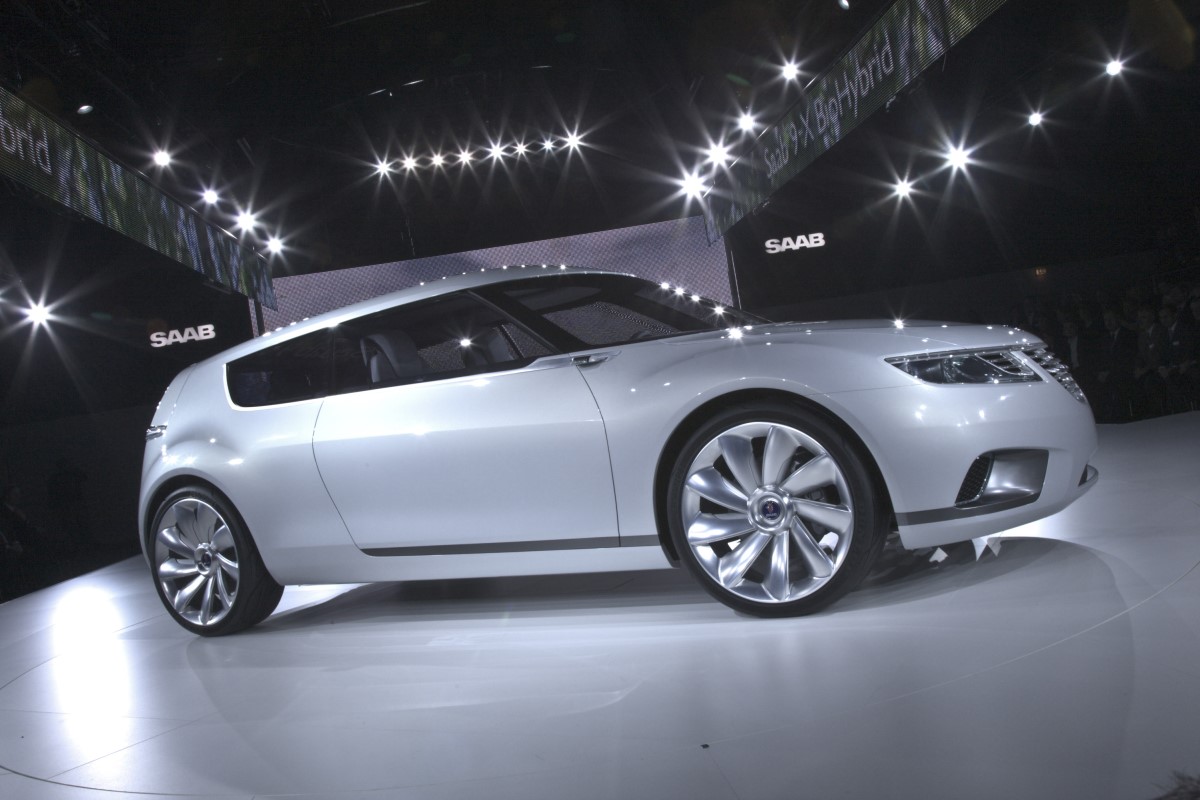Saab 9-X BioHybrid Voted “Best Concept”
 |
| Saab 9-X Biohybrid |
The editors of AutoWeek, one of North America's most respected and longest standing automotive enthusiast magazines, have voted the Saab 9-X BioHybrid "Best Concept" upon its world debut at the auto show in Geneva this week. With this award, the Saab 9-X BioHybrid premium compact joins the very successful Saab Aero X coupe concept which received AutoWeek's "Best in Show" honors upon its debut in Geneva, two years ago.
"We are honored by this important recognition from the expert editors of AutoWeek," said Steve Shannon, Saab Automobile USA general manager. "The way the 9-X BioHybrid was welcomed by the world's press and the public in Geneva has exceeded many optimistic expectations. Following in footsteps of the highly inspirational Aero X, as well as the 9-4X BioPower crossover concept which debuted in Detroit just a few weeks ago, the 9-X BioHybrid demonstrates that the Saab brand has tremendous potential."
The 9-X BioHybrid, which is scheduled to make its North American debut at the New York International Auto Show press days on March 19, is a vivid vision of what a future compact car from Saab could look like. It is designed to reflect the priorities of youthful customers who seek progressive looks, responsible performance and high-tech communications, all in a sporty, fun-to-drive package.
 |
| Saab 9-X Biohybrid |
Exploring design themes from Saab's award-winning Aero X and earlier 9X concepts, the 9-X BioHybrid also demonstrates the potential for ultra-efficient power from a 200 hp (147 kW), 1.4-liter BioPower turbo engine backed by GM's next-generation hybrid system. Projected combined cycle CO2 emissions of just 105 g/km on E85 fuel are testimony to the promise of this package.
The interior showcases an entirely new expression of Saab's driver-focused cockpit design, together with innovative, seamless connectivity for personal nomadic devices and a rear cargo deck with a 'low friction' loading system.
"This car is all about efficiency in design and performance," says Anthony Lo, director of Advanced Design at General Motors Europe, who led the 9-X BioHybrid design team in co-operation with the Saab Brand Center in Sweden.
With its 'turbine' wheels placed at all four corners, minimal bodywork overhangs and an extended roof line, the proportions of the three-door Saab 9-X BioHybrid bring a dynamic, new dimension to conventional compact 'hatchback' looks.
The smooth 'fuselage' bodywork, now without any visible handles or door mirrors, the bold 'wraparound' window graphic and deep front grille are all themes inspired by the Aero X coupe concept shown at Geneva two years ago.
The car's distinctive 'shooting brake' silhouette and rear functionality are developed from the 9X multi-role concept shown at Frankfurt in 2001. "You could say we designed this car from back to front," says Lo. "The shape of the 9X is right for a car of this size, and the longer roof line helps the aerodynamics as well as providing more rear headroom and interior space."
Echoing Saab's roots in aircraft design, the 9-X BioHybrid also explores the potential for using active aerodynamics to reduce drag – and fuel consumption – at cruising speeds. Above 70 kph (43 mph), the upper and lower bodywork is reshaped as the roof spoiler automatically extends to further lengthen the roof line and an underbody diffuser is deployed from the bottom of the rear bumper.
The four-seater cabin introduces an entirely new execution of Saab's driver-focused cockpit design. The central, floor-mounted console, with its angled controls and displays, is now eliminated. Instead, the driver-focused layout incorporates a main instrument panel that sweeps out from the top of the door molding, arching across the driver. The embedded 3-D graphics appear to be 'frozen' in ice, continuing a Scandinavian design theme first seen in the Aero X.
Reflecting the needs of youthful customers, who expect easy access to multi-media both inside and outside the car, Saab has co-operated with Sony Ericsson in providing seamless in-car connectivity for a range of nomadic devices. The result is a wireless interface for streaming data, entertainment and satellite navigation functions for display and use. The interface also allows the simultaneous use of multiple devices when passengers are in the car.
At the rear, the cargo deck features an electrically-powered slide-out floor, which is activated when the bottom half of the split tailgate drops down. The floor, and the back of the folding rear seats, is covered by 'high friction' rubber carpeting, which 'grips' items and holds them securely in place. For easy loading and unloading, aluminum bars automatically rise up and down as the tailgate is opened and closed.
The treatment of light is an important part of Scandinavian design and this is evident in the use of variable, white ambient lighting inside the cabin. The level of suffused illumination can be changed in intensity from bright and cold to warm and soft. It's a personalized feature that could even be programmed, for example, to reflect the pattern of the changing seasons.
"This car shows how our concept work can be carried forward into a compact format," adds Anthony Lo. "It has a number of features which we will be developing further, such as the new driver-focused design theme, the importance of clean, uncluttered surfaces and the easy, seamless connectivity inside the car."
